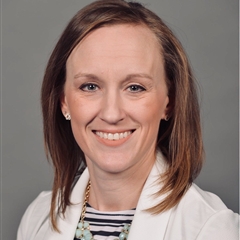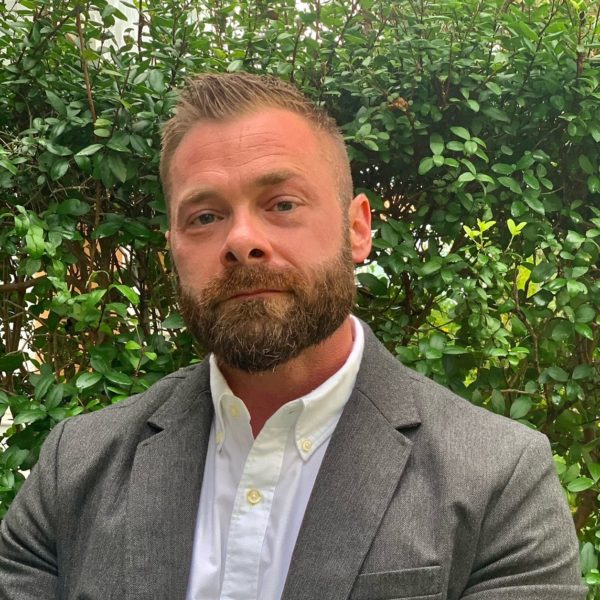Episode 28: Tieg Herman and Megan Friedrich on Key Components of a Successful Sales Enablement Function
3K Views | 19 Min Read
Shawnna Sumaoang: Hi, and welcome to the Sales Enablement PRO podcast. I am Shawnna Sumaoang. Sales enablement is a constantly evolving space, and we’re here to help professionals stay up-to-date on the latest trends and best practices so they can be more effective in their jobs.
I would like you guys to just do a brief introduction to you, your role, and if one of you guys could give a brief introduction to Deluxe, that would be great.
Tieg Herman: My name is Tieg Herman and I lead product marketing and sales effectiveness at Deluxe Corporation.
Megan Friedrich: And my name’s Megan Friedrich and I work on our sales effectiveness team at Deluxe Corporation.
SS: I would love to talk to you guys and better understand how long you have had sales enablement within your organization.
TH: Yeah, we’ve really been focused on sales enablement for about five years. We’ve had different permutations of sales enablement for many years prior to that. But I think, along with the rest of the industry, we’ve really been on this transition from what I’ve heard one person in the industry refer to as “random acts of enablement” to a strategic asset to the organization.
We talk about being sales enablement with a capital E. Really moving beyond being the helpdesk for a sales organization and focusing more on enabling the sale of our products. It has been about a five-year journey with that, and we are making a lot of progress.
SS: And could you tell me a little bit about the key roles and responsibilities that you have on your current team?
TH: Yeah. Before we developed org charts and specific roles we wanted to start with the end in mind. We always try to do that. We coach our sales team to start with the end in mind as they engage with a client or prospect, and so we want to live by that as well as we build out the organization. So, to do that we wanted to identify the areas of expertise that we thought were important to the sales enablement group and to get there we built out a charter. We think that’s really important to always have a charter in developing a team, whether that’s sales enablement or otherwise.
And in that charter, we identified several areas that were really important to us. We talked about tool development, sales process, communications, strategy, technology, and several others. We were able to construct roles that addressed each of those and divided out responsibilities. Those are the kind of primary areas that we focus on and think about: sales effectiveness and sales enablement.
MF: Yeah, and if I could just jump in there too, I think when we talk about roles we really have focused on what are the unique attributes of a successful sales enablement person in those roles. This is really – as Tieg mentioned – it’s a newer role in the industry and there are some specific things that we really focus on for our team. Who we bring to the team and as we look to expand and grow, these people that are on our team, we really rely on them to build credibility. They need to be able to build credibility with people up to the VP and C-level internally in our organization.
It can be really hard if you’re unknown. So, Tieg and I both have this luxury of having past credibility within the organization and having been in both product and marketing roles that transferred over. That’s crucial. Part of that is because you need to build that internal navigation: you need to know how to navigate with product and sales and marketing partners and all their unique cultures.
The other thing you really need to know is that you need to understand how salespeople work. You need to know what motivates them. Both Tieg and I have never held a quota, so we need to understand how our salespeople are motivated. We need to be adept at knowing what a quota is and how are they incentivized.
And then another thing is sales enablement people need to understand how to work in an ambiguous situation. There are a lot of large problems that we’re looking to solve and we don’t necessarily have a specific roadmap or project plan right now written out. We need to be able to work through that. We need to be able to be strategic but also be able to execute on the back-end and really have that analytical mindset.
SS: I love that. I love that you guys are being that thoughtful both about how your org is structured and in addition to that, the people that you’re bringing onto your team. And I think that that is a lot of great criteria for folks that are on a sales enablement team.
I would love to understand, Megan, just a little bit more background on you. You’ve led the implementation and management of your sales enablement technology at Deluxe. I would love to hear from you some of the core types of technology that other sales enablement professionals should consider having in their tech stack.
MF: Yeah. So, I think that it all kind of centralizes around a CRM system. This is typically owned by a sales operations team, sometimes also sales enablement depending on how your team a structured.
In our role, we really need to be critically aligned to how the sales teams are using the CRM and ensure that our other tech tools in our tech stack integrate with our CRM and they speak to each other so we’re coming across as a centralized tool for our sales teams.
Along with that, I would say a content management platform with advanced analytics capabilities that allow you to measure content, understand how your content ties to your sales process, and also developing success criteria around that, is really important. Some type of technology that allows you to communicate with your field – sometimes that’s within your CRM, sometimes that’s a standalone system – but something that allows you to effectively communicate with your field, however, that works in an organization.
Collaboration tools are really critical. Sometimes these are owned by the enterprise, sometimes they’re owned by sales enablement, but allowing you to collaborate internally with your sales teams but also with product and marketing and the other functions in your organization that you work with.
We specifically, at Deluxe, also have a couple of other systems that we look at. We have a value proposition or a business case tool that is specific to our sales tools tech stack that we use to integrate with our business cases. RFP software is important if you are having RFPs come in and if your team owns that process. And then also if you are focused on training or if your organization to have training involved, a learning management system or some type of learning management module builder is important, as well.
SS: Absolutely, absolutely. And I am sure as you’re well aware of, one of the things that we hear from a lot of sales reps is that the biggest inhibitor to getting them to actually use this is really adoption because there’s often tool fatigue within a lot of organizations. So how have you successfully rolled these out to your teams to secure high adoption and avoided the whole notion of dealing with tool fatigue among your reps?
MF: Yeah, this is really hard. I won’t say it’s easy. We talk a lot about the power of the status quo both when we’re talking about B2B sales or any type of sales, but internally as well. For salespeople, just like human nature, the status quo is super powerful. It’s easier to just do what you’ve always done, especially if you have a tenured sales organization. If they are used to producing results the way they’ve done it, they’re probably not going to change.
We really focus on starting at the top. We need to start with our leaders and we need to start with our key stakeholders. We think this is critical to develop those strong relationships and partners with your sales leaders because if they’re willing to adapt and encourage their team, that’s going to go a long way.
We focus a lot on training, training, and training again. We focus on customized training to that specific sales team’s culture, as we nuance to who we’re talking to. It’s just that constant reinforcement and also making it as easy as possible for them to use. If it’s a tool or if it’s training, don’t make it hard for them to get the content. Make it easy for them to access it.
And then lastly, we have a really big focus on governance, and we think that this is where sales enablement can really play a strong role. It’s often forgotten – reporting on tools, making sure you have the analytics on what’s being successful, highlighting where there are areas of opportunity to improve or maybe there are some teams that are succeeding and some that aren’t, and using and developing the use cases internally to really promote adoption.
SS: Excellent. On the whole notion of actually getting your reps easy access to content, Tieg, as a director of product marketing and sales effectiveness, how do you help ensure that marketing holistically is partnering with sales enablement? To not only ensure that you’re producing high-quality content that your reps are actually going to be using, but that you’re also getting feedback from your reps back into your marketing organization around what they need and how to prioritize their needs?
TH: I think that it all starts again, with starting with an end in mind. That’s something that I get made fun of in the office for using that phrase so often. But I really believe in it, and as I reflect back on previous roles that I’ve had – I was in product marketing before I was in sales enablement, and then I was back in kind of both areas – I think about the tools that we’d produce at that time. I’d heard from the sales organizations, “Hey, we’re having problems with overcoming this conversion objection. Can you put something together that addresses that?” or “We need to justify pricing.” Whatever the particular objection was, we had to, in response, create tools to support that – and I hope those were effective in some way.
But as we have started to understand the sales enablement market better and understand the dynamic B2B buying environment better, we’ve really worked hard to align every sales tool that we create to a buying stage. We always want to work with our clients and our prospects to help them succeed. Ultimately that’s what we want to do, help our clients succeed. If they don’t succeed, then we don’t succeed.
So, getting back to starting with the end in mind. If our end in mind is to lead with insight, then creating a marketing tool that’s aligned to an early sales stage is about that insight. If our end in mind is to position our product or offer against a competitor, align that to a later sales stage. So, that’s what is really important to us: to make sure that we have congruence between how our buyers buy and how we’re helping them by adding value throughout the entire buying process.
I think the same can be said as we think about marketing campaigns that we develop. We want to make sure that every tool that’s created within a marketing campaign can also be used as a standalone sales tool to try to maximize our effectiveness that way.
And then you talk about feedback. Feedback comes in a lot of different ways. That comes both through personal relationships and it comes through technology. So, we want to make sure that we have both of those channels open at all times. Megan talked about working with sales leaders, also working directly with the sales organization, we always want to hear about the tools that we put into the market and if they’re effective or not. We want to get those verbatim or anecdotal stories.
We also want to be able to track usage patterns through some of our technology. We can do that, like recently, where we put something new out and can go out and say, “Well, I was able to go and see only a handful of sellers have actually accessed this tool, so let’s follow back up on this. Did this hit the mark or not?”
There’s functionality where inside our sales portal we can get our sellers to give a piece of content a thumbs up or a thumbs down. That’s very simple, but when you start to aggregate those numbers it tells you a story on whether that piece is effective or not. So – just to steal Megan’s phrase again – it’s not easy but we try to come at it from a lot of different ways to help us figure out where to double down or where to pull back.
SS: I love that. And actually, if you guys don’t mind me deviating from the question a little bit, Megan, what’s your background? You are also on the marketing side of the house historically?
MF: Yes, so I have a little bit of a blended background. I started my career in marketing, in a marketing communications role. I spent several years in a product management and program management role at Deluxe, before moving over to sales enablement. So, I’ve worked directly with sales, both in marketing and on the product side, and then now with sales effectiveness.
SS: Very cool. And I just wanted to get that context because I love a lot of the things that you guys are calling out during this conversation. I think, as a marketer myself as well, one of the things that I’d love to drill in on a little bit is maybe just getting your perspective. You mentioned this earlier that the B2B buying environment is changing. I would just love for you to elaborate on what that is and the impact it’s having on sales reps.
TH: Yeah, the B2B buying environment is changing a lot. There are more players involved in a purchasing decision than ever before. So, as more players get involved, the likelihood of getting a decision, “yes” or “no,” decreases pretty dramatically. There are a lot of studies out there that quantify that change. But that really just reinforces what Megan said earlier about the power of the status quo. A lot of times Megan and I will take calls with different organizations just to see how we’re being approached because we get to see the B2B buyer.
To see different approaches, you get pitched new technology that seems really interesting or to have a lot of bells and whistles and looks pretty cool, but you can’t really connect into how that’s going to impact your organization. You can’t really connect into what business problem that solves, or why you should move off the status quo. You’ll remember six months down the line having a generally favorable or curious opinion of what that company does, but not really remembering what they could do from an impacting your business perspective.
You look at other organizations, and this is what we aspire to do as well, that come in and demonstrate that they understand the market your in, demonstrate expertise in that market, demonstrate an understanding of us as a buyer, and then help us navigate through problems that we’re facing throughout that buying journey. Those are the organization that you’re doing business with because you believe that they’re invested with you and helping you succeed.
So, we believe that it is less about pushing product than it is about solving problems for customers and helping them understand what the market looks like and demonstrating expertise in that market and helping them succeed. Megan, I’m sure you have a lot to add there, but that’s sort of some of the manifestations of that change in the marketplace.
MF: Yeah, I mean, I think the one thing I would add is that we focus pretty heavily on what we would add to our sales process. And we don’t mean that in terms of just our stages and our pipeline – we’re talking about changing how we sell. So much of that aligns to the buyer’s buying process and we need to be more focused on that than ever before. We can’t just go out and sell how we’ve always sold. Like Tieg said, we really need to understand our customer and understand where they’re at in the buying process, and then align our efforts and our sales tools to where our customers are at.
As he said, it’s such a complex environment when you’re dealing with selling B2B. Especially to large organizations, you could be dealing with six buyers, you could be dealing with 20 buyers, you could be dealing with a year and a half-long sales lead cycle, and it’s just really navigating that cycle and that process aligned to what the issues and the problems the buyers are facing versus your solutions.
SS: Thanks for listening! For more insights, tips, and expertise from sales enablement leaders, visit salesenablement.pro. If there’s something you’d like to share or a topic you want to know more about, let us know – we’d love to hear from you.













